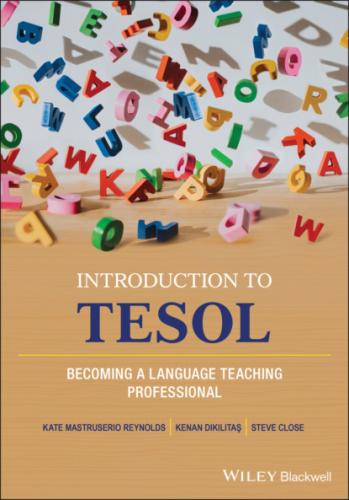5 Yuting, L., & Hyun, J.(2015). Linguistic imperialism. In F. V. Tochon (Ed.), Language education policy studies (online). University of Wisconsin—Madison. Retrieved from: www.languageeducationpolicy.org/21stcenturyforces/linguisticimperialism.html (accessed March 4, 2021).
References
1 American Council on the Teaching of Foreign Languages (ACTFL). (2012). ACTFL proficiency guidelines 2012. American Council on the Teaching of Foreign Languages.
2 Association Internationale de Linguistique Appliquée or International Association of Applied Linguistics. (n.d.). Welcome. https://aila.info (accessed March 4, 2021).
3 Board of Regents of the University of Wisconsin System. (2012). WIDA’s 2012 amplification of the ELD standards (Publication). WIDA Consortium.
4 Canagarajah, A. S.(2003). Resisting linguistic imperialism in English teaching. Oxford University Press.
5 Centre for Education Statistics and Evaluation (CESE). (2018). Schools: Language diversity in NSW. CESE Bulletin. New South Wales Government. https://www.cese.nsw.gov.au/publications-filter/schools-language-diversity-in-nsw-2018 (accessed March 4, 2021).
6 Council of Europe. (n.d.). Global scale—Table 1 (CEFR 3.3): Common reference levels. https://www.coe.int/web/common-european-framework-reference-languages/table-1-cefr-3.3-common-reference-levels-global-scale (accessed March 4, 2021).
7 Cummins, J.(1979). Cognitive/academic language proficiency, linguistic interdependence, the optimum age question and some other matters. Working Papers on Bilingualism Toronto, (19), 197–202.
8 Cummins, J.(2008). BICS and CALP: Empirical and theoretical status of the distinction. In N. Hornberger (Ed.), Encyclopedia of language and education (pp. 487–499). Springer.
9 Demographics of Qatar. (2019, October 6). https://en.wikipedia.org/wiki/Demographics_of_Qatar
10 Oré, D., & Diaz, L.(2019, July 27). In 21st century, threats ‘from all sides’ for Latin America’s original languages. Reuters. https://www.reuters.com/article/us-latam-indigenous-language/in-21st-century-threats-from-all-sides-for-latin-americas-original-languages-idUSKCN1UN04W (accessed March 4, 2021).
11 Phillipson, R.(1992). Linguistic imperialism. Oxford University Press.
12 World-Class Instructional Design and Assessment (WIDA). (2012). 2012 amplification of the WIDA English language development standards. Board of Regents of the University of Wisconsin System.
13 World-Class Instructional Design and Assessment (WIDA). (2020). WIDA English language development standards framework, 2020 edition kindergarten—Grade 12. Board of Regents of the University of Wisconsin System.
2 How Is TESOL an Academic Profession?
In this chapter, you will view the profession from a bird’s eye view while learning about the instructional contexts and professional development opportunities for preparation to teach ESL/EFL/ELT. You will learn about professional engagement in the field of TESOL/Applied Linguistics, which will be highlighted against a backdrop of the history and development of the field. You will encounter how professionals in TESOL engage in the role of advocacy for their language learners and profession.
Learning Outcomes
At the conclusion of this chapter, you will be able to:
describe different instructional contexts for teaching English and for teacher preparation to work in a TESOL environment
identify the international and regional professional organizations that you could join and their history and contributions to the field
justify your membership in international and regional professional organizations based on the benefits they provide
devise a professional development plan for yourself
justify engaging in advocacy for the profession and learners and lend your support through advocacy activities
A colleague attended an international convention, which she describes in the vignette. Notice the breadth of topics and her enthusiasm about the experience. Reflect upon what sessions you may be interested in attending.
TESOL Voices
The Convention Extended and Enhanced Teacher Preparation
I attended my first TESOL International Association Convention in 2009 in Denver, Colorado, as an undergraduate student with only a couple years of theoretical classroom knowledge and encouragement from my advisor, who was very active in the TESOL community. I was assured an engaging, fun experience and the reality certainly did not disappoint.
Coming from a smaller university with an intimate TEFL program, the TESOL convention was my first real-world glimpse into the breadth and diversity of the field. I remember the feeling of amazement the first time I paged through the conference guide and saw the variety of sessions and workshops being offered in just a few days. The range of interest sections and topics was impressive and exciting. There was so much more than I expected, and the scope of fields affiliated with TESOL instantly broadened. There were sessions about peacekeeping and conflict resolution, public policy, linguistics, and technology in addition to the hundreds of sessions about pedagogy—lessons, best practices, and opportunities to hear about practical classroom experiences. As a student with very little hands-on experience in the field, these sessions were insightful and offered authentic applications of textbook and classroom-learned theories and practices. Attending the conference proved to enhance of my education as well as a connection to the professional realm. The community is welcoming, and I never felt out of place or too unqualified to be there.
I continued attending after gaining teaching experience, eventually submitting my own proposals and participating as a co-presenter in collaborative sessions with fellow classmates and colleagues. In addition to local and state conferences, I have found the convention to be a touchstone for staying current with advancements in the international field. It has been one of the best ways to connect with teachers and advocates to share and learn new resources and ideas.
Kara Shore
Instructor
Our Professional Roots
While second language learning has been occurring since different language speakers first interacted, the field recognizes two major milestones in our origins. The history of second/foreign language teaching begins with instruction in the classics of Greek and Latin in 1750 (Howatt & Smith, 2014). The second major milestone was the commencement of formal academic study of second language acquisition in the 1960s (Ellis, 2014). Many programs of TESOL/Applied linguistics date to the early 1960s as well and grew from university programs of modern languages and linguistics (Modern Language Association, n.d.). While TESOL teacher preparation programs may be found in university English or linguistics departments, they may also be located in departments of education of modern/world languages.
Since the mid-1960s when TESOL was emerging as a professional
